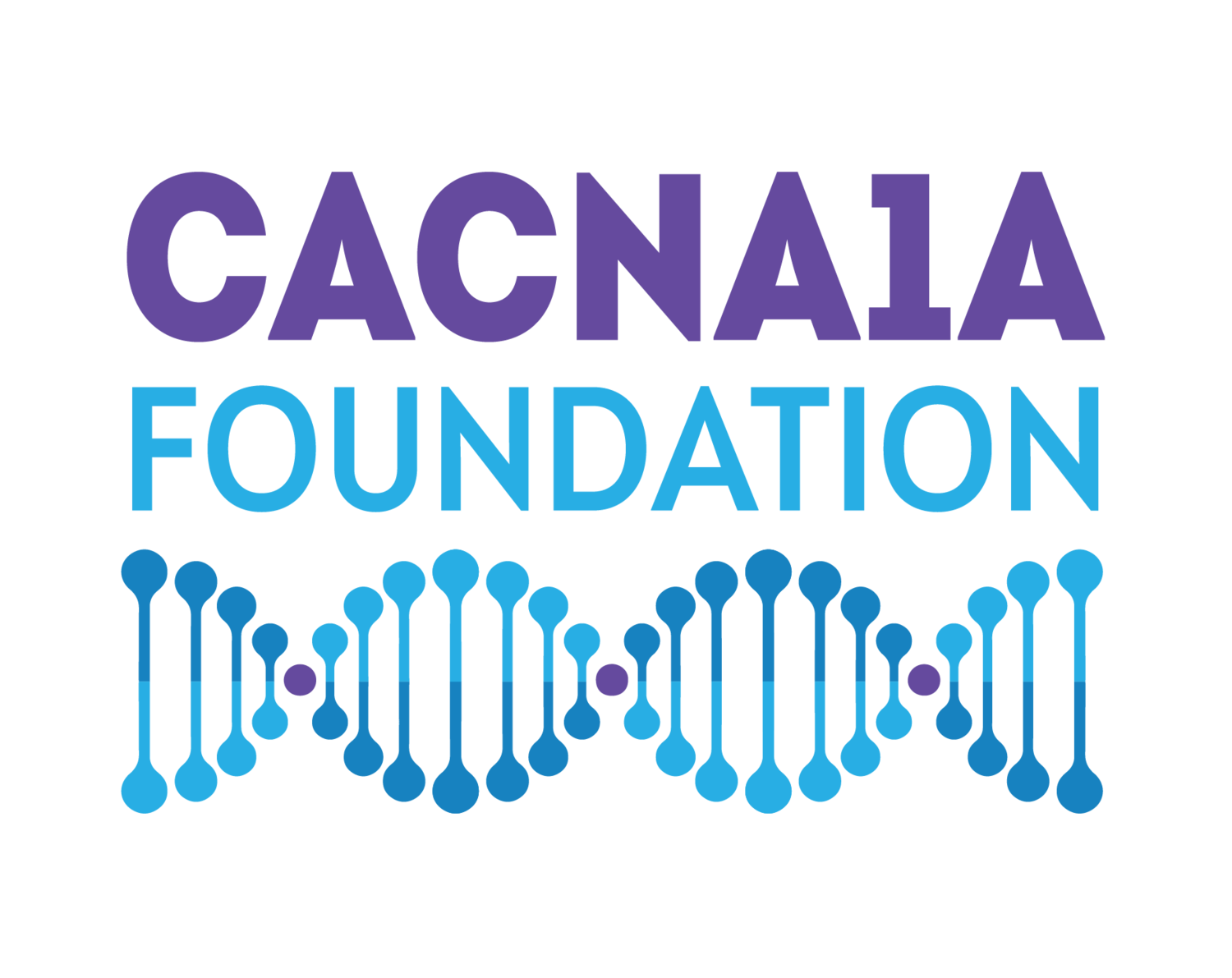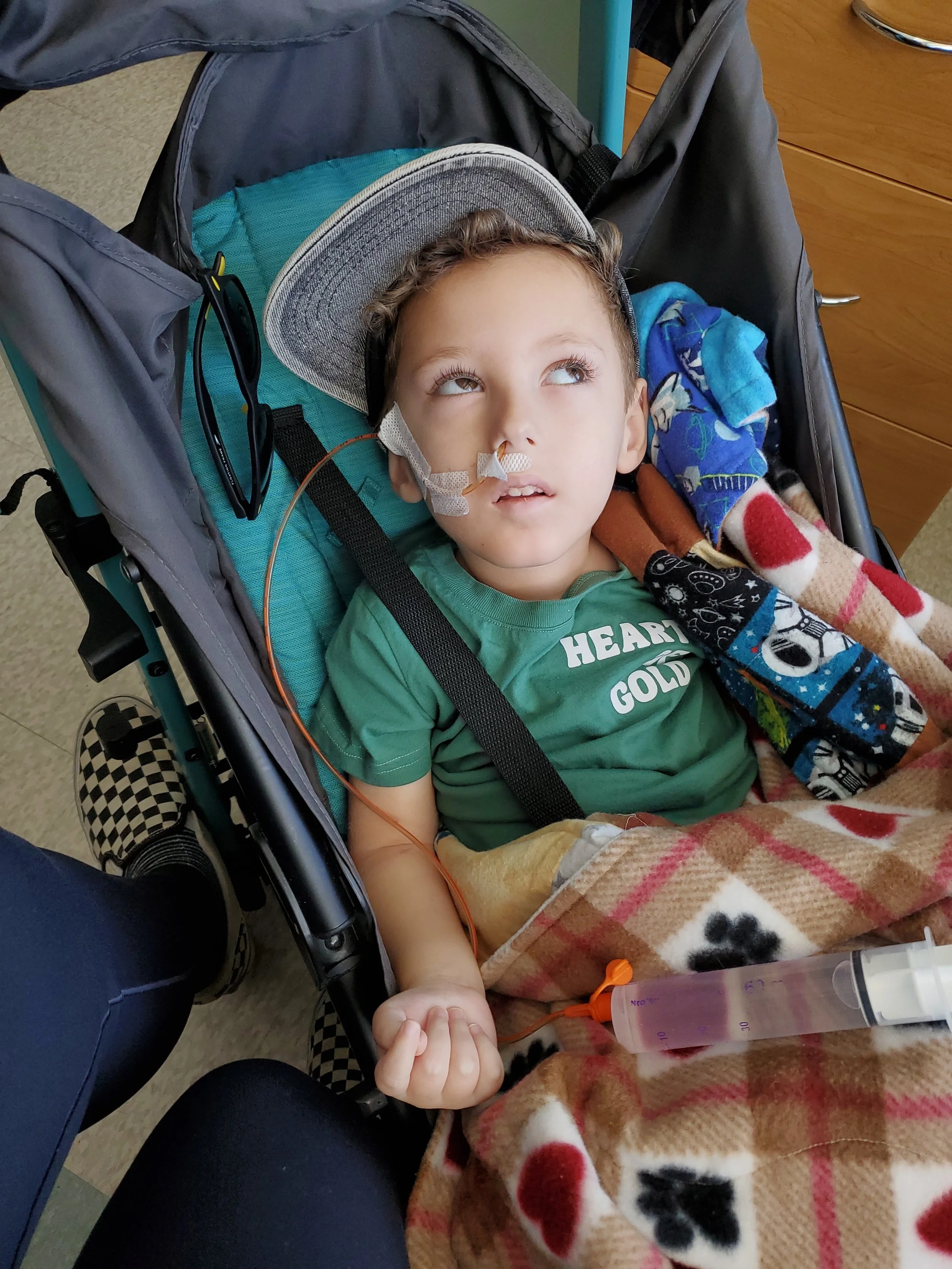Finnegan’s Story
Finn’s journey was first shared on our Champion page in 2023, when he was two years old. Now 3½, Finn has faced extraordinary challenges — including severe seizures and critical health emergencies. His mother, Jossy, recently sent us an update on her sweet and determined little boy.
Jossy writes:
Due to Refractory Epilepsy and Developmental and Epileptic Encephalopathy (DEE), every breath is a struggle, but Finn shows up and takes every challenge on with more fight than you'd expect by looking at him. He is passionate, short-tempered, and fiercely determined. I am certain his drive is what has kept him alive and moving forward, even if only slightly.
This story was updated in Spring 2025.
Variant: R1349Q
History
When Finn was four months old, his parents became aware that his development was atypical. At the time, he was diagnosed with global developmental delays and hypotonia. Their first major scare came when Finn was six months old — he experienced the first of what Jossy now considers to be non-epileptic episodes because they could stop them by rubbing his cheek. (According to their neurologist, it's not a seizure if we can bring him out of it.) These two minute long episodes presented with rhythmic body jerks, tongue protrusion, eye rolling, and head turning. Finn was sent for an EEG, CT scan and genetic testing. That led to his CACNA1A diagnosis. Jossy knows that they are extremely blessed to have had genetic testing as an option so early on.
At first, what they witnessed was attributed to Finn’s excitement. As he grew, his parents learned to prevent these “tic” episodes by distracting him when he became overly excited. A year later, almost to the date, Finn had his first febrile status epilepticus episode. After 14 hours in the ER, he was discharged on Keppra, a seizure medication that unfortunately caused severe side effects, including extreme irritability (Keppra Rage) and worsening sleep. Their neurologist believed Finn was relatively safe from seizures as long as he stayed healthy, so they transitioned him to a rescue medication plan — to be used only if he showed signs of illness. Shortly after Finn’s second birthday, Everything changed! A low-grade fever and rhinovirus triggered a catastrophic episode of status epilepticus. Finn spent two months in the hospital, fighting for his life. During that time, he endured four different drug-induced comas, 28 days of intubation, a trial of Anakinra, all for naught. He was finally discharged less capable than a newborn with subclinical seizures raging 90% of the time. Finn was unable to eat by mouth, control his eyes, hold up his head, bear weight on his legs, or manage his secretions. He was on seven antiseizure medications as well as medication for blood clots and a breathing treatment plan. Doctors predicted he might not survive six months due to seizures or aspiration pneumonia. (The doctors were wrong!) While progress has been slow and hard-won, Finn continues to show small signs of improvement. His seizure pattern has changed: he now has zero subclinical seizures but endures about 15 clinical tonic seizures per hour. His treatment plan has been adjusted to five antiseizure medications.
In 2023, Jossy told us that, from a gross motor standpoint, he was still not sitting independently, crawling, or walking. She wrote, Finn communicates with us, in his own way, by babbling but does not use signs or proper words. He does not actively feed himself, dress or undress himself, and does not play with toys appropriately. Although he is making progress in this area! Socially, Finn loves both adults and other kids but does not interact appropriately. Yet, he's determined and will throw a fit if you try to help him.
Finn Today - Finn faces significant challenges. His seizure burden stands at 15 tonic seizures an hour, every hour. His epileptologist believes his epilepsy is genetic and structural at this point. He is being followed by Yale for N.O.R.S.E./F.I.R.E.S. He has a severe movement disorder that hinders the ability to really know what specific movement disorders he has.
Diagnoses
Refractory Epilepsy and Developmental and Epileptic Encephalopathy (DEE)
Global Developmental Delay
Ataxia and Hypotonia
Nystagmus
Paroxysmal Tonic Upgaze
Cortical Visual Impairment (rated at .5 on the scale of 0 being the most severe to 10 being least severe)
SCN1A (likely dormant)
Therapies
Since the age of two, Finn has received a range of therapies and support:
Early Intervention: Through California’s Early Start Program, Finn received physical therapy and cognitive/social development sessions with a home-based teacher. Swimming also helped expand his range of movement.
Dynamic Movement Intervention (DMI): Jossy describes DMI as the most impactful therapy so far. During a two-week intensive, Finn even attempted a step — a huge milestone for a child who struggles to move his legs while lying flat.
Feeding Therapy: Private therapy has helped Finn become familiar with using his mouth again.
Chiropractic Care: Finn has a routine that includes ongoing chiropractic adjustments and infrared treatments, as well as home use of Truvaga and red light therapy.
Additional Services:
California Children’s Services (CCS): Provides weekly physical and occupational therapy sessions.
Valley Mountain Regional Center (VMRC): Offers respite services, home modifications, and equipment funding.
In-Home Support Services (IHSS): Provides financial assistance to support Finn’s care needs.
Public School Support:
Home Hospital program with weekly teacher visits
Virtual PT, OT, and speech sessions once a month
Monthly in-home visits from a specialized teacher for the blind
For Those Newly Diagnosed
Jossy shares this heartfelt advice for families beginning their journey:
Just breathe — you can survive this second. Be in the moment for right now and remember: you can survive this second. Your baby needs you to be their constant.
There’s no use looking too far ahead, because even doctors cannot predict the future. Right now is real and factual — and you can survive it.
Don’t be afraid to ask for help. Burnout is real, and you are no good to your child if you can’t function. Be specific about what you need. If you need laundry done or dishes washed, say so. It's not weakness; it's fortitude.
One More Thing
Jossy also shares an important tip for other families:
She recommends having a thorough food and environmental sensitivity test done early on. Functional medicine doctors can help guide you to the right testing. For Finn, this made a huge difference — they discovered that the formula he had been on for a year and a half was actually causing significant inflammation. (Who would have guessed he was allergic to peas?) Finn is now on a new formula, and while it’s too early to know for sure, his family is hopeful that reducing inflammation might help lower his seizure burden over time.
A Note From Jossy
Jossy explains that she delayed updating Finn’s story because she wished she could offer a more hopeful picture. She wants to encourage other families — and while Finn’s journey may represent one of the more extreme presentations of CACNA1A-related disorders, their family still holds onto hope.
I am hopeful we will have some breakthroughs during Finn's life, and for that, there will be lots of hope.










